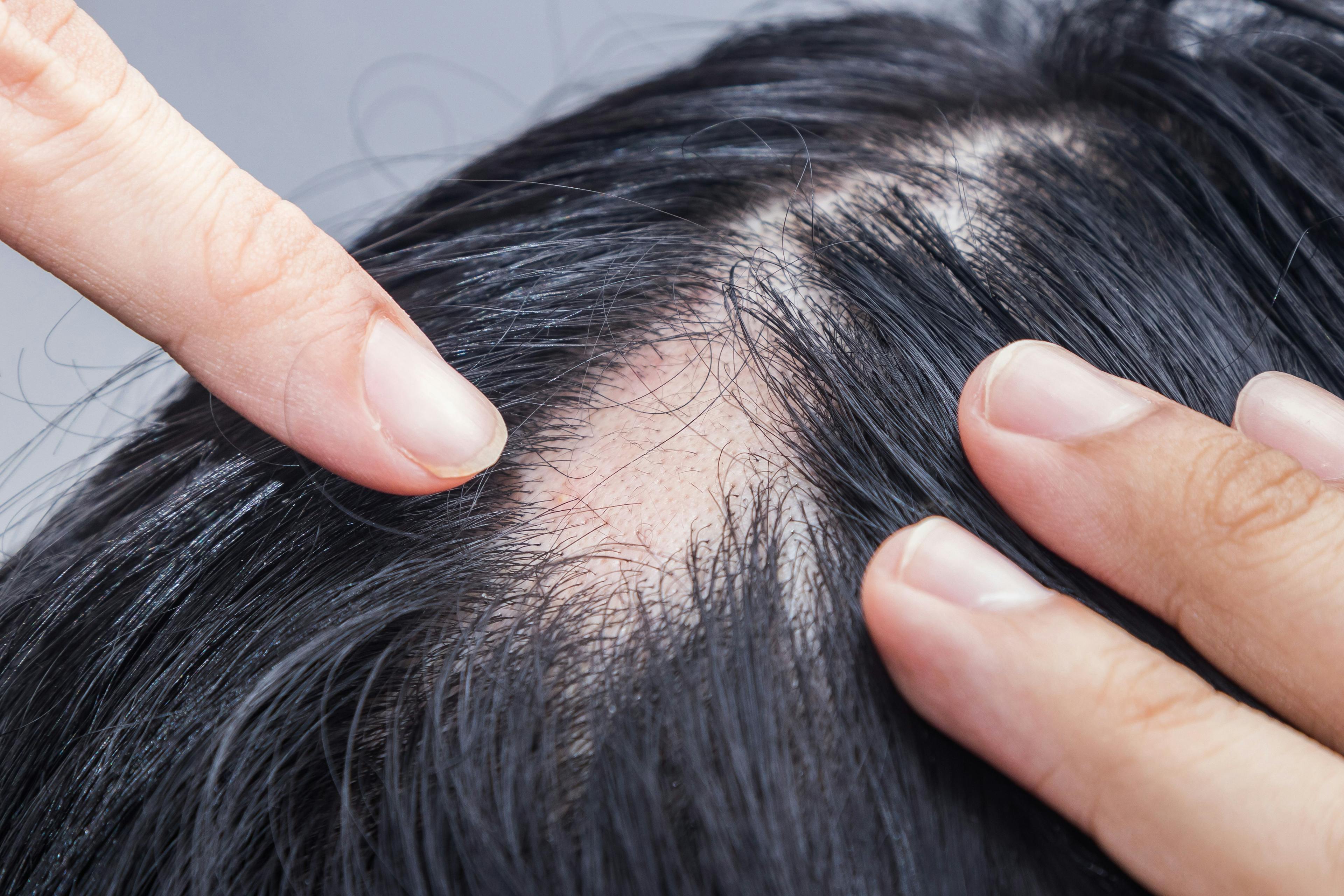- Acne
- Actinic Keratosis
- Aesthetics
- Alopecia
- Atopic Dermatitis
- Buy-and-Bill
- COVID-19
- Case-Based Roundtable
- Chronic Hand Eczema
- Drug Watch
- Eczema
- General Dermatology
- Hidradenitis Suppurativa
- Melasma
- NP and PA
- Pediatric Dermatology
- Pigmentary Disorders
- Practice Management
- Precision Medicine and Biologics
- Prurigo Nodularis
- Psoriasis
- Psoriatic Arthritis
- Rare Disease
- Rosacea
- Skin Cancer
- Vitiligo
- Wound Care
Publication
Article
Dermatology Times
Nourishing the Skin From Within
Author(s):
Can dietary modifications really improve dermatological conditions?
A well-balanced diet has long been associated with a good general health, and continued research has once again brought into focus the important relationship between nutrition and good general health, including healthy skin. Dietary modifications consisting of a low - glycemic index diet, essential fatty acids in fish oils, and supplementation of probiotics and prebiotics can potentially impact the skin and be useful in improving dermatologic conditions including atopic dermatitis and acne.1
Adding a variety of fruits and vegetables containing vitamins C, D, and E as well as other powerful antioxidants such as polyphenols found in tea, coffee, grapes, and chocolate with high cocoa content may play a role in ameliorating the inflammation of certain diseases and in managing the symptoms of acne and AD.
Characterized in part by skin barrier disruption and inflammation, AD has been associated with the development of food allergies, asthma, and allergic rhinitis. Food allergies, intolerance, and sensitivities can contribute to the severity of AD. Similarly, certain foods may play a role in exacerbating the intensity of acne flares.
“There is a growing list of skin conditions and diseases such as AD and acne that have been shown to be directly impacted by certain nutritional patterns and dietary interventions. In addition to regular exercise and other positive lifestyle changes, keeping a healthy diet full of fruits and vegetables and taking various nutritional supplements might have further beneficial effects on impaired skin structure and the functional integrity of the skin and can help maintain skin health,” said Diane L. Whitaker-Worth, MD, FAAD, a professor of dermatology at UConn Health Farmington, Connecticut.
For decades, there has been a back and forth regarding the value of nutrition and its impact on dermatologic disease, Whitaker-Worth said. However, due to a paucity of evidence-based studies in this area, dermatologists and other health care professionals have found it challenging to offer specific recommendations to their patients regarding diet and dietary supplementations to help improve the symptoms of dermatologic conditions.
Dietary Modifications for AD and Acne
Whitaker-Worth noted that research has shown a high–glycemic index diet plays a role in some patients in developing acne. Specifically, foods with a high glycemic index such as carbohydrates and sweets are viewed as contributing to the development and perpetuation of acne. These high–glycemic index foods, including milk specifically, will stimulate insulin and insulin-like growth factors, resulting in an increase in androgen production that in turn will drive acne in many patients.
Many patients with acne are interested in learning how their diet contributes to the disease and its flares, but our understanding of the connection is limited. Milk contains anabolic steroids as well as growth hormones and other growth factors, and the presence of 5α-pregnanedione, 5α-androstanedione, and other precursors of 5α-dihydrotestosterone may contribute to the potency of milk as an acne stimulant. It has become clear in the current literature that androgens play an important role in patients with acne and acne-like symptoms and that a diet filled with processed foods may also increase total body inflammation and exacerbate inflammatory skin conditions such as acne and AD.
“There was a perception at one point that skim milk was a stronger driving factor than milk containing a higher percentage of fat,” Whitaker-Worth said. “We used to tell our patients to tone down or avoid skim milk intake because too much of it might exacerbate acne. Today, we still do not know if this is entirely true or [whether] the whey proteins in milk are actually what is driving the exacerbation of acne symptoms. Avoiding or cutting back on large amounts of milk, perhaps especially skim milk, will not necessarily cure acne but may have a positive impact on acne symptoms in some patients.”
Moreover, a diet rich in fruits and vegetables with less processed food and high–glycemic index foods could further improve acne symptoms in certain individuals.
The high amounts of ω-3 fatty acids found in healthy fish oil from such sources as herring, mackerel, salmon, tuna, and sardines and in plant-based oils from canola and soybean oils, walnuts, almonds, and flax and chia seeds have been shown to improve cholesterol and decrease inflammation while preserving collagen in the skin. In addition, the high content of linoleic acid found in vegetable oils, nuts, seeds, meats and eggs, and probiotics such as lactic acid bacteria and Bifidobacterium readily found in yogurt, kefir, sauerkraut, and pickles are also thought to be potentially beneficial in inflammatory conditions such as acne and AD.
“Dietary modifications for acne and AD symptoms usually do not replace the expanding armamentarium of medical therapies we have at our disposal. However, they might be an important addition to therapy for some patients,” Whitaker-Worth said.
The Role Food Plays in AD
Compared with acne, AD is a more complex disease, so dietary manipulation is more difficult to assess because the driving factors of AD are not completely understood. Individuals who are allergic to foods such as peanuts, cow’s milk, eggs, and other dairy products know to avoid these foods, but many people do not have these specific allergies and cannot easily relate AD flares to specific foods.2
“Certain foods can sometimes elicit or exacerbate AD in patients,” Whitaker-Worth said. “However, they are much harder to identify as a causative factor, and many times patients attribute a variety of rashes to food sensitivity, especially in younger children and infants. Yet these foods may not actually have any connection to [the] atopic dermatitis.”
With all the potential external environmental factors associated with AD, it is difficult to definitively identify and prove the link between food and disease, so much of the onus is on allergists to try to tease out the relevant associations. According to Whitaker-Worth, any suspected food triggers are best evaluated by an allergist because elimination diets are often unnecessary and sometimes harmful.
“Part of the problem, especially with young children is that parents start to eliminate many foods or frequently change their child’s formula thinking the food might be making their patient’s eczema worse. However, the skin symptoms we see in most of the cases of AD are probably not primarily food driven. There are a few foods that an allergist can look at and perhaps further explore with specific food challenges to see if patients have a potential involvement in AD,” Whitaker-Worth said.
Because AD is common in infants and children, it is the hope that specific prenatal and perinatal measures might prevent the disease. Researchers have studied prevention by having mothers avoid or limit certain kinds of foods while pregnant or breastfeeding, but no good evidence yet shows that these measures make a difference long term. Whitaker-Worth noted, however, there may be some minimal protective effect imparted to the child who is exclusively breastfed for the first 3 to 4 months of life.
Probiotics are also being studied for their potential ability to reduce allergic hypersensitivity and AD severity. These living microorganisms modulate the general microbiome and immune status by improving the intestinal barrier, but their true therapeutic potential remains unknown. According to Whitaker-Worth, the current understanding of the complex gut microbiome is not sufficient to know the true value of probiotics or to make responsible, scientifically backed recommendations regarding their ideal intake or impact on AD.
“Probiotics may be good for the gut microbiome, but at this point, we cannot say if they are beneficial in terms of the treatment and management of [patients with AD],” Whitaker-Worth said. “There is tremendous variability in the composition and quality of the many different types of probiotics [and] the dosing, as well as the population in which to study them. In my opinion, the jury is still out regarding probiotics and their effective therapeutic implementation in AD, and we cannot reliably recommend them in treating this disease.”
Prebiotics, on the other hand—the most common of which include fructo-oligosaccharides, galacto-oligosaccharides, and transgalacto-oligosaccharides—could impart a small beneficial effect in some patients with AD. These nondigestible ingredients can beneficially affect the gut microbiome by selectively stimulating growth or limiting some species of intestinal bacteria such as Bifidobacterium and Lactobacillus. Prebiotics are found in many fruits, vegetables, and whole grains, including apples, artichokes, onions, garlic, asparagus, bananas, barley, berries, and cocoa.
Although dietary manipulations have thus far been somewhat underwhelming in the treatment of AD, several novel FDA-approved therapies are available, including ruxolitinib cream 1.5% (Opzelura), upadacitinib (Rinvoq), abrocitinib (Cibinqo), tralokinumab-Idrm (Adbry), and dupilumab injection (Dupixent), which have all shown significant efficacy in the treatment and management of AD.2
Not a Replacement for Medical Management
Many patients would love to have dietary options for AD, but according to Whitaker-Worth, dietary control of AD may not be as effective as many hoped and the therapeutic success in taking specific dietary measures largely depends on individual patients and their general allergic status or other factors not yet understood.
“Patients should clearly try to avoid allergens known to exacerbate their skin condition and should visit their allergist or dermatologist to help discover and confirm suspected bad players vis-à-vis their AD symptoms,” Whitaker-Worth said. “However, other than specific food allergens or identifying contact allergens that one can avoid and eliminate from the environment and possibly their diet, it remains difficult to make specific recommendations to patients.”
Other triggers of AD may include contact allergens such as jewelry metals (ie, nickel), cosmetic products, preservatives, and fragrances. These common contact allergens need to be avoided in the environment when patients are known to be sensitive to them. Small amounts of these allergens can be found in foods, and for the rare individuals who might be exquisitely sensitive, their elimination from the diet may make a difference in controlling or minimizing the symptoms of AD.
“Most dermatologists probably do not routinely advise their [patients with AD] on specific nutritional interventions because we simply do not have good data that diet plays a large role in controlling disease or [that] it does not affect the medical intervention that we may already have in mind for the patient,” Whitaker-Worth said. “Still, many patients are interested in the impact of nutrition on their condition, and it is an important discussion in the broader context. However, typically dietary stipulations are not significant enough to replace medical management for most patients.”
Disclosures
None relevant
References
1. Khan A, Adalsteinsson J, Whitaker-Worth DL. Atopic dermatitis and nutrition. Clin Dermatol. 2022;40(2):135-144. doi:10.1016/j.clindermatol.2021.10.006
2. Kleinman E, Laborada J, Metterle L, Eichenfield LF. What’s New in Topicals for Atopic Dermatitis? Am J Clin Dermatol. 2022 Sep;23(5):595-603. doi: 10.1007/s40257-022-00712-0. Epub 2022 Sep 1. PMID: 36048410; PMCID: PMC9464760.

Newsletter
Like what you’re reading? Subscribe to Dermatology Times for weekly updates on therapies, innovations, and real-world practice tips.






















